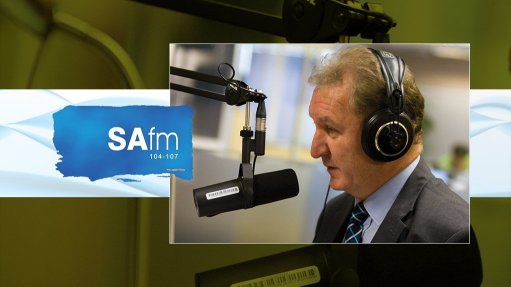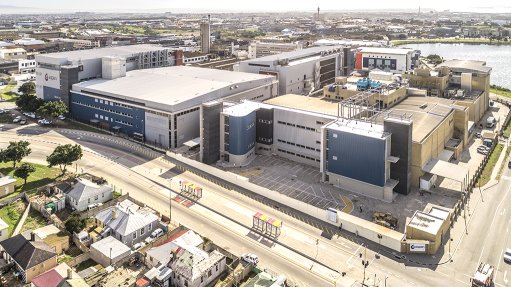CEF expects newly merged SANPC to be stabilised by this time next year
The Central Energy Fund (CEF) Group of Companies on March 14 provided an update on the merger of its subsidiaries Petro SA, iGas and the Strategic Fuel Fund, to create a single entity called the South African National Petroleum Company (SANPC).
In addressing the Portfolio Committee on Mineral Resources and Energy, CEF chairperson Ayanda Noah said the merger of the three entities was entering Phase 2, which is focused on stabilising the entity, following the completion of design and operationalisation activities in Phase 1.
Noah admits that the merger has been a colossal task, which has involved the review of thousands of documents, consideration of various merger model archetypes and legal aspects, as well as several engagements between unions, government and other stakeholders, since Cabinet gave the go-ahead for the merged entity in June 2020.
In November 2022, Cabinet approved the implementation of Phase 2 of the merger.
The project management team undertaking the merger activities undertook a comprehensive baseline assessment, as part of Phase 1, which identified that SANPC can reach R1-billion in earnings before interest, taxes, depreciation and amortisation (Ebitda) within three years of operating and generate R20-billion of Ebitda by 2030, with earnings growing at an average rate of 11% a year.
The team also identified market opportunities valued at R95-billion that could be accessed by SANPC.
Noah stated the first phase of the merger activities had established the building blocks for the new entity, including governance and communication systems, as well as legal parameters of operation.
“This merger will be a catalyst for unlocking economic growth in the country. We are now focused on accelerating our efforts to finalise implementation of Phase 2, to get to those massive market opportunities,” she added.
CEF CEO Dr Ishmael Poolo affirmed that the SANPC would be supported by the CEF until it was capacitated through the transfer of relevant business aspects from the legacy entities. From there, the new entity would undergo optimisation and start expanding its footprint.
He explained that Phase 2 of the merger activities would result in the finalisation of key working capital commitments and other funding requirements, as well as the finalisation of leadership structures and transitional service agreements (TSAs).
Poolo expects to have the transitionary board and CEO for the SANPC approved by April 1, with more permissions and approvals by government and other stakeholders to follow between 10 and 40 weeks from April 1. This would include approval of the finalised SANPC structure.
Therefore, Poolo said the SANPC would be “stabilised” by this time next year, with permanent SANPC employees having been transferred or appointed, and with TSAs concluded.
He added that the appointment of an SANPC transitionary board and legacy transitionary board would begin after key consultation and alignment with the Mineral Resources and Energy Minister Gwede Mantashe.
The transitionary boards would not only fulfil statutory requirements, but also enable efficient execution of the transition activities to stabilise the SANPC.
The SANPC transitionary board would serve until a permanent board could be appointed, which was anticipated within 10 to 11 months, and the legacy transitionary board would be in place until the respective entities were wound down.
The transitionary boards would be accountable for entering into a master lease and assignment agreement and all supporting agreements, finalising the organisational design to understand employee implications and facilitating the transfer of employees. The boards will also be responsible for obtaining the necessary consent for transfer of assets and operating licences of the respective entities.
Poolo said the master lease and assignment agreement would enable the start of all transition activities.
Moreover, he highlighted some of the risks to the transition project included the hostility of unions in relation to the Section 179 transfer process and other labour-related matters, for which the transitionary team would execute a detailed stakeholder engagement plan and ensure regular sessions with unions.
Another risk includes significant project delays owing to time, quality and cost-related elements impacting on the achievement of key milestones, to which the project management office would track overall initiatives and flag change management requirements.
Poolo assured the committee that the project management office would do its level best to support the infrastructure and data migration process, and limit operational disruptions.
Noah concluded by admitting that the merger had been a challenging process thus far, but said the team was making every effort to ensure a sustainable and reliable entity that benefited the country in a positive manner.
Comments
Press Office
Announcements
What's On
Subscribe to improve your user experience...
Option 1 (equivalent of R125 a month):
Receive a weekly copy of Creamer Media's Engineering News & Mining Weekly magazine
(print copy for those in South Africa and e-magazine for those outside of South Africa)
Receive daily email newsletters
Access to full search results
Access archive of magazine back copies
Access to Projects in Progress
Access to ONE Research Report of your choice in PDF format
Option 2 (equivalent of R375 a month):
All benefits from Option 1
PLUS
Access to Creamer Media's Research Channel Africa for ALL Research Reports, in PDF format, on various industrial and mining sectors
including Electricity; Water; Energy Transition; Hydrogen; Roads, Rail and Ports; Coal; Gold; Platinum; Battery Metals; etc.
Already a subscriber?
Forgotten your password?
Receive weekly copy of Creamer Media's Engineering News & Mining Weekly magazine (print copy for those in South Africa and e-magazine for those outside of South Africa)
➕
Recieve daily email newsletters
➕
Access to full search results
➕
Access archive of magazine back copies
➕
Access to Projects in Progress
➕
Access to ONE Research Report of your choice in PDF format
RESEARCH CHANNEL AFRICA
R4500 (equivalent of R375 a month)
SUBSCRIBEAll benefits from Option 1
➕
Access to Creamer Media's Research Channel Africa for ALL Research Reports on various industrial and mining sectors, in PDF format, including on:
Electricity
➕
Water
➕
Energy Transition
➕
Hydrogen
➕
Roads, Rail and Ports
➕
Coal
➕
Gold
➕
Platinum
➕
Battery Metals
➕
etc.
Receive all benefits from Option 1 or Option 2 delivered to numerous people at your company
➕
Multiple User names and Passwords for simultaneous log-ins
➕
Intranet integration access to all in your organisation





















